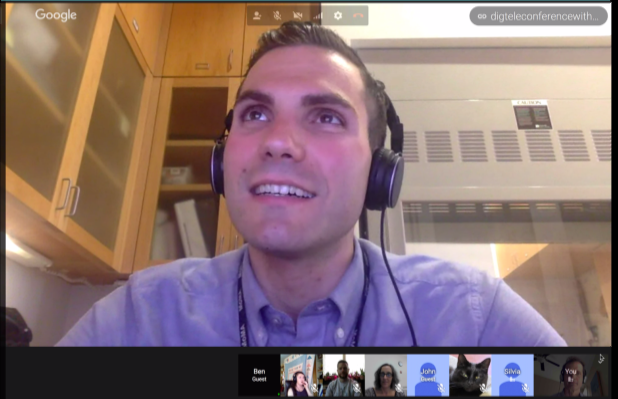
00:00Introduction by Jon Ippolito.
01:48Ben Fino-Radin on acquiring the earliest Macintosh icons
07:21Obsolete media: digitizing obsolete floppy disks with the Kryoflux
11:09Obsolete file systems: imaging early Macintosh/Windows file systems
12:47Obsolete formats: using emulators to read disk formats
14:07Missing software: opening images without the program that created them
15:22How to provide access for curators
20:13Museum versus archival collections
21:24The first work of Internet art collected by a museum
23:17Missing software: how do you reconstruct server scripts?
27:31Handling error-filled content (invalid HTML)
28:41Forking a work into multiple versions
30:58Rewriting code and security concerns
32:31Restoring two versions of the same work
33:08The new, live version: a functioning participatory interface
33:43The restored, historic version: updating Web links with the WayBack Machine
35:51Multiple restorations with different purposes
38:12Web browsers as the future of media access
(This excerpt refers to our 2015 teleconference with Dragan Espenschied.)
40:08Professional versus crowdsourced preservation
42:05Transfer Station (XFR STN), and a cat
45:42Solutions for small collections
46:19Case study: Cory Arcangel Studio
46:49DropBox for remote access and backup
48:32Infinite version history and checksums
49:38Binder: a digital repository manager developed at MoMA
(More on Binder here)
51:53Matters of Media Art: Solutions for collections of middle scale
53:23Open-sourcing a website by hosting it on GitHub
This teleconference is a project of the University of Maine's Digital Curation program. For more information, contact ude.eniam@otiloppij.
Timecodes are in Hours: minutes
In this teleconference, Ben Fino-Radin joined students of the UMaine Digital Curation graduate program to answer questions about his work as a skilled preservationist with both a high-level view of the field as well as in-depth knowledge about pragmatic tools.
 This New York-based conservator has been a driving force behind some of the most innovative conservation projects of the last decade, working with the Whitney, New Museum, and most recently as digital collection manager at the Museum of Modern Art. Fino-Radin's projects include preserving the world's longest sentence--the first work of Internet art acquired by a museum--and a crowdsourcing initiative called Transfer Station (XFR STN), which invited owners of personal or institutional archives to bring floppy disks, videotapes, and other obsolete formats to a walk-in forensic clinic that digitized their material and posted it to the cloud.
This New York-based conservator has been a driving force behind some of the most innovative conservation projects of the last decade, working with the Whitney, New Museum, and most recently as digital collection manager at the Museum of Modern Art. Fino-Radin's projects include preserving the world's longest sentence--the first work of Internet art acquired by a museum--and a crowdsourcing initiative called Transfer Station (XFR STN), which invited owners of personal or institutional archives to bring floppy disks, videotapes, and other obsolete formats to a walk-in forensic clinic that digitized their material and posted it to the cloud.
At MoMA he has worked with some of the best-known artists of this generation and collaborated with Archivematica to develop an open-source preservation tracking tool called Binder. His work has been profiled by the New York Times, Library of Congress, and Boston Globe.
His conversation with the University of Maine's online Digital Curation program was recorded on 12 May 2016.
Watch the entire video or choose an excerpt from the interactive menu below.